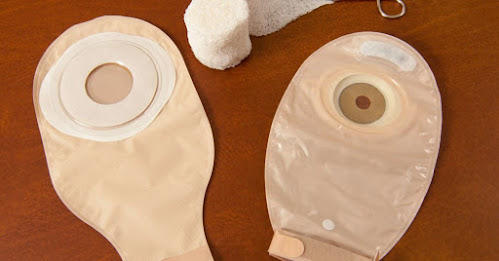Ostomy surgery is a life-saving procedure that alters the excretory pathway. Some diseases can result in the intestinal tract or bladder to stop functioning. Such a condition can lead a person requiring a surgical treatment aimed at bypassing the normal excretory pathway. The newly formed artificial pathway for waste excretion is known as an ostomy.

No matter what type of ostomy you are going to get, there are a few things that can expect before and after surgery.
Preparing for ostomy surgery
First of all, you are going to get an appointment with an ostomy care nurse before the procedure. The nurse will review the surgical procedure and will explain likely changes in the GI tract after surgery. They will also demonstrate how an ostomy pouching system works. You will be given a quick overview of skills that you are going to need to change or empty your ostomy pouch.
Based on where the diseased part of the colon or small intestine starts from, your nurse will mark the location of the stoma on your abdomen. They will make sure that the stoma location is easily accessible to you. Marking the stoma location provides your surgeon with necessary information about the type and location of the stoma.
In the next step, your surgical team will schedule a pre-operative visit. During this visit, the team will examine your condition and will explain the surgical procedure. You can discuss all of your concerns related to ostomy surgery you are going to have.
After surgery, you will need to stay at the hospital for about five days to have an initial recovery. You will be discharged from the hospital as soon as your bowel activity resumes. This resumption is marked by the output of gas and watery stool from your stoma.
Ostomy care after surgery
After surgery, your nurse will teach you the right way to use ostomy supplies to manage your stoma. By the time you will leave the hospital, you will know how to empty or change your pouch. The hospital will provide you several ostomy care supplies to let you adapt to the ostomy care regimen in the best possible way.
After leaving the hospital, you are going to have to make sure that you are not missing any of the follow-up visits, which you are going to need to pay every two weeks for the first few months. These visits will let you steer clear of, or deal with, any complications related to your GI tract, stoma, or peristomal skin.
During the first few weeks after surgery, your stoma will change shape quite frequently. Nurses suggest measuring the stoma every two weeks after surgery. After six weeks, the stoma will retain shape and size.
Many people wonder if there is any diet-related change that they have to bring in their lives after ostomy surgery. It is worth mentioning here that an ostomy doesn’t stop you from eating whatever you want to eat. There are indeed some diet changes that you are going to have to stick with during the first few weeks after surgery, but those changes are meant to keep a more vulnerable GI tract from harm’s way.
As far as the exercise is concerned, you would have to be a bit cautious about heavy lifting. You will need to start low and slow to adapt to the fitness regimen that you intend to continue after surgery. You can talk to your doctor for guidance in this regard.



